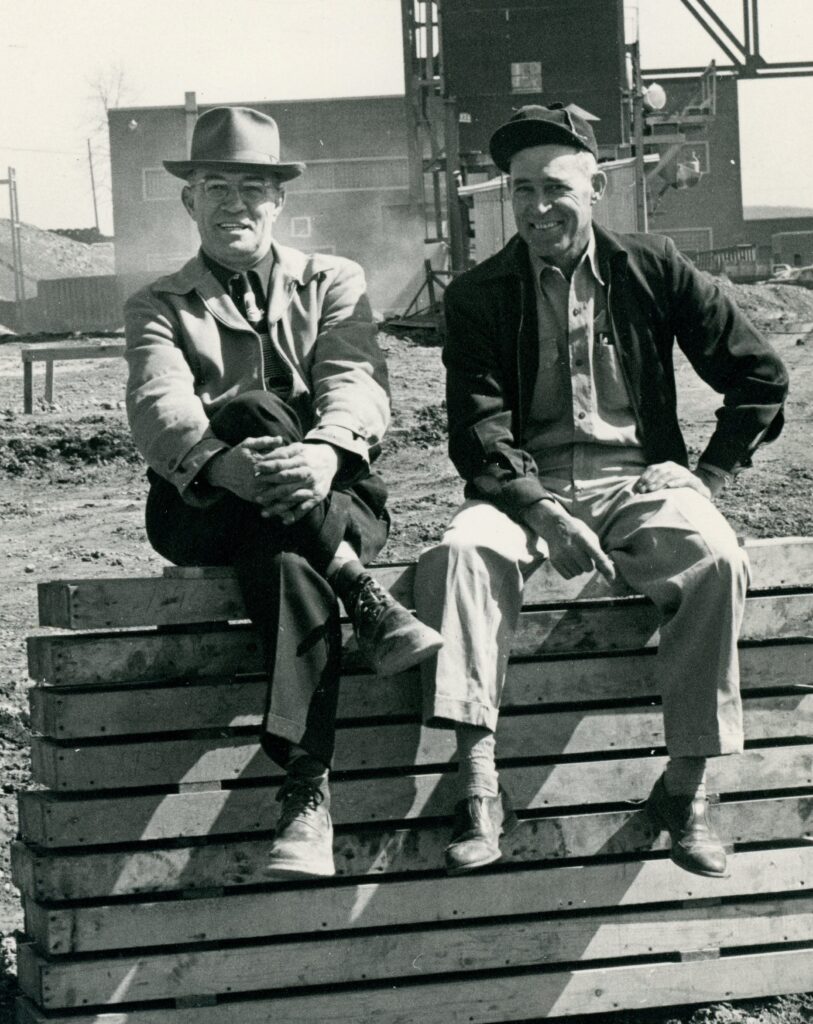Cornwall Borough resident Bruce Chadbourne offers another of his installments of Cornwall history. This article and its photographs would not be possible without the gracious assistance of Michael Emery, Site Administrator of the Cornwall Iron Furnace.
51 years ago, Tropical Storm Agnes flooded the Cornwall Mine, expediting the end of over 230 years of operation when it closed a year later on June 30, 1973. Though Lebanon County’s industry and commerce have moved on, they owe their existence to the discovery and development of what had once been described as the largest iron mine in the western hemisphere, with its lode of rich magnetite ore and other precious minerals.
With the coming of 2023, the Cornwall Iron Furnace intends to celebrate the anniversary of the closure of the mine by recognizing Cornwall’s “greatest generation,” those few miners and iron workers who remain among us.
The celebration began this week with the release of a video on the Furnace’s YouTube channel featuring an oral history interview with Cornwall Manor resident Clair “Nip” Bernard, who worked in Mine No. 3 for about 15 years until much of the mine closed in 1972. The video may be watched here.

After leaving the mine, Clair continued his employment with Bethlehem Steel at the Millard limestone quarry near Annville. Both Clair’s father and grandfather were also Cornwall miners, making him a third-generation employee. His father D.R. Bernard was also a surveyor and active resident of Rexmont.

Two other oral history interviews with Cornwall miners are poised for release. The next video will be on Jan. 24 with another Cornwall Manor resident, Gerald Boltz. His father having been in Bethlehem Steel administration, “Gerry” was able to get a summer job for several years. Working in the same Mine No. 3, his interview will describe memories of some of the more menial tasks.
On Feb. 14, a video will be released featuring Lebanon resident and retired miner Frank Stellar. Frank tells of coming home from World War II with his buddies and finding jobs in the mine. With many tales of working the mine shaft and planting explosives, Frank shares his personal photographs in the video. Stay tuned…

Though the 1960’s photograph of the open pit shows an impressive view, it is difficult to grasp its expanse and depth (note: by clicking on the photo you may be able to zoom and explore further). The hidden features are the mine shafts and the complex underground engineering.
The lower left quadrant of the photo shows the surface area of Mine No. 3. On close examination you’ll see the descending shaft. To the very lower left is Burd Coleman Village, one of eight villages in Cornwall Borough, adjacent to which used to be the massive Burd Coleman furnaces (removed in the 1920’s). To the left are Cornwall Manor with its Buckingham mansion, and the Cornwall Iron Furnace. Upper left is Anthracite Village, also the site of an anthracite furnace now removed.
At the top center of the photograph is what remains of the heavily excavated “Big Hill” and beyond it, the Concentrator Plant. To the upper right Miners Village and old Horseshoe Pike (Route 322) can be seen.

You may recognize someone in the above photo of men riding down into mine No. 3 to start their day’s work. Cornwall Iron Furnace hopes there are more retired Cornwall miners and iron workers “out there” who read this and come forward to share their own stories, photos and memorabilia. Call the Furnace at 717-272-9711, or leave a comment in the videos so you may be contacted. A list of names and contact information will aid in planning an anniversary event this coming summer. Your assistance in providing first-hand confirmation of ongoing research will be very helpful.
That’s not to say that only the miners have stories to tell! Certainly there are surviving wives and family members of deceased miners, who have memories or a stash of their own memorabilia. Please share your treasures so that a greater story of the Cornwall iron mine may be preserved for all.
Ideas for future history stories? Let us know here.
Do you want to read more stories like this?
If you want to see LebTown continue and expand its history reporting, consider joining LebTown as a member. Your support will go directly towards stories like this and you will be helping ensure that our community has a reliable news source for years to come.
Learn more about membership and join now here.



































